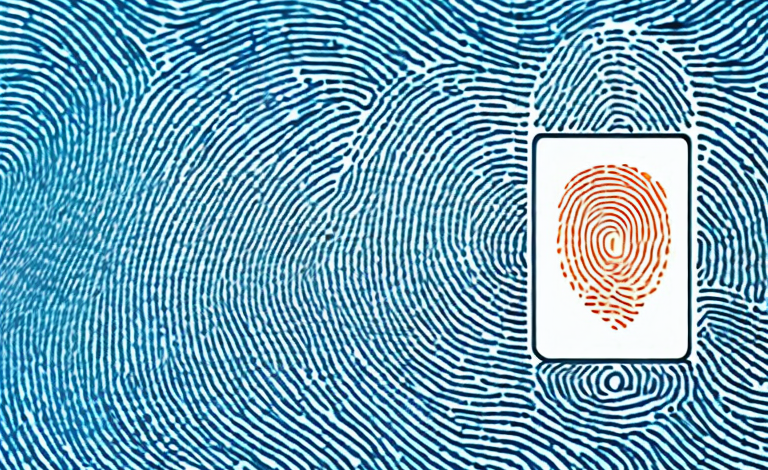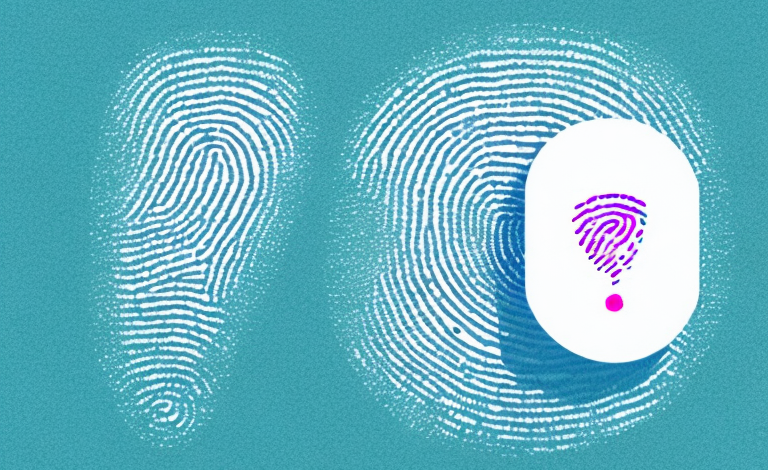Fingerprint sensors are becoming increasingly common, being used in everything from smartphones to law enforcement systems. They use biometric data to authenticate users, which is believed to be more secure than traditional passwords. However, there has been growing concern about the security of fingerprint sensors and whether they can be cracked. In this article, we will examine the basic technology behind fingerprint sensors, their security compared to traditional passwords, potential vulnerabilities and methods used to exploit them, and best practices for securing devices with fingerprint sensors.
Understanding the basics of fingerprint sensors and how they work
Fingerprint sensors work by capturing an image of the user’s fingerprint and comparing it to a previously stored image to authenticate their identity. This technology relies on the fact that every person’s fingerprint is unique, and so can be used as a reliable authentication factor.
There are two main types of fingerprint sensors: optical sensors and capacitive sensors. Optical sensors capture an image of the user’s fingerprint using light, while capacitive sensors use the electrical properties of the user’s fingerprint to create an image. Both types of sensors have their advantages and disadvantages, but capacitive sensors are more commonly used due to their higher accuracy and speed.
In addition to optical and capacitive sensors, there are also ultrasonic fingerprint sensors. These sensors use high-frequency sound waves to create a 3D image of the user’s fingerprint, which is more secure and accurate than other types of sensors. Ultrasonic sensors are also more resistant to dirt, water, and other environmental factors that can affect the accuracy of other sensors. However, they are currently more expensive and less widely available than other types of sensors.
The security of fingerprint sensors compared to traditional passwords
Fingerprint sensors are believed to be more secure than traditional passwords because they cannot be guessed or stolen in the same way. However, they are not infallible and there are potential vulnerabilities that can be exploited.
In general, fingerprint sensors are more secure than passwords when used in isolation. However, when combined with other security factors like a PIN or password, they become even more secure.
One potential vulnerability of fingerprint sensors is that they can be fooled by fake fingerprints. This can be done by creating a mold of a real fingerprint or by using a high-resolution image of a fingerprint. Additionally, if a person’s fingerprint is compromised, it cannot be changed like a password can be.
Another consideration is that not all fingerprint sensors are created equal. Some sensors may be more easily fooled than others, and some may not be as accurate in identifying a person’s fingerprint. It is important to research and choose a high-quality fingerprint sensor to ensure maximum security.
The different types of fingerprint sensors available in the market
As mentioned earlier, there are two main types of fingerprint sensors: optical and capacitive. There are also other variations such as ultrasonic sensors and thermal sensors, but these are not as common.
Optical sensors use light to capture an image of the user’s fingerprint. They are less expensive and have a lower error rate, but they are also less secure and can be easily fooled by fake fingerprints.
Capacitive sensors, on the other hand, use the electrical properties of the user’s fingerprint to create an image. They are more expensive and have a higher error rate, but they are also more secure and less susceptible to fake fingerprints.
Ultrasonic sensors use high-frequency sound waves to create a 3D image of the user’s fingerprint. They are more secure than optical sensors and less susceptible to fake fingerprints, but they are also more expensive and have a higher error rate. Thermal sensors, on the other hand, use heat to create an image of the user’s fingerprint. They are less common and less secure than other types of sensors, but they can be useful in certain situations where other sensors may not work, such as when the user’s fingers are wet or dirty.
The potential vulnerabilities of fingerprint sensors and how they can be exploited
There are a few potential vulnerabilities that can be exploited in fingerprint sensors. The most common is spoofing, where a fake fingerprint is used to bypass authentication. This can be done by creating a mold of the user’s fingerprint or by using a high-resolution image to create a fake fingerprint.
Another potential vulnerability is interception, where the authentication data is intercepted during transmission. This can be done by a hacker intercepting the data as it is sent over a wireless network.
Additionally, fingerprint sensors can also be vulnerable to hacking through software manipulation. Hackers can exploit vulnerabilities in the software that runs the fingerprint sensor, allowing them to bypass authentication or gain access to sensitive data.
Furthermore, there is a risk of physical damage to the fingerprint sensor, which can render it useless or allow unauthorized access. For example, if the sensor is scratched or damaged, it may not be able to accurately read the user’s fingerprint, leading to authentication failure or allowing someone else to access the device.
The risk of using fingerprint sensors for sensitive transactions and data access
The risk of using fingerprint sensors for sensitive transactions and data access depends on the level of security provided by the sensor and the device it is used on. In general, fingerprint sensors are more secure than traditional passwords, but they are not infallible.
If a device is lost or stolen, an attacker may be able to bypass the fingerprint sensor and gain access to sensitive data. It is also possible to create a fake fingerprint to fool the sensor if an attacker has access to the user’s fingerprint.
Another risk of using fingerprint sensors is that they may not work properly for some users. This can be due to factors such as dry skin, scars, or other physical conditions that affect the user’s fingerprints. In such cases, the user may have difficulty accessing their device or data, which can be frustrating and time-consuming.
Furthermore, the use of fingerprint sensors raises concerns about privacy and data protection. Users may be hesitant to provide their biometric data to third-party companies, especially if they are not confident in the security measures in place to protect that data. There is also the risk that this data could be hacked or stolen, potentially leading to identity theft or other forms of fraud.
Breaking down the methods used to crack fingerprint sensors
There are several methods used to crack fingerprint sensors, including creating a mold of the user’s fingerprint, using a high-resolution image to create a fake fingerprint, or intercepting the authentication data during transmission.
There are also new developments in artificial intelligence and machine learning that may make it easier to crack fingerprint sensors in the future. As these technologies become more sophisticated, it will be increasingly important to employ additional security measures to keep biometric data safe.
One potential security measure that can be employed is multi-factor authentication, which requires users to provide additional forms of identification beyond just their fingerprint. This can include a password, a security token, or even facial recognition. By requiring multiple forms of identification, it becomes much more difficult for hackers to gain access to sensitive information.
Examining the effectiveness of biometric authentication beyond fingerprints
While fingerprint sensors are one of the most common forms of biometric authentication, they are not the only one. Other biometric authentication methods include face recognition, iris recognition, and voice recognition.
Each of these methods has its advantages and disadvantages, and some may be more effective than others depending on the use case. For example, face recognition may be more convenient for mobile devices, while iris recognition may be more secure for high-risk transactions.
Another biometric authentication method that is gaining popularity is palm recognition. This method uses the unique patterns and lines on a person’s palm to verify their identity. It has been found to be more accurate than fingerprint recognition and can also be used for contactless authentication, making it ideal for public spaces such as airports and hospitals.
However, despite the advantages of biometric authentication, there are also concerns about privacy and security. Biometric data is highly sensitive and can be used for malicious purposes if it falls into the wrong hands. It is important for companies to implement strong security measures to protect this data and ensure that it is not misused.
Best practices for securing devices with fingerprint sensors
There are several best practices that can be used to secure devices with fingerprint sensors. These include using additional security factors like a PIN or password, keeping the device up-to-date with the latest security patches, and avoiding use of public Wi-Fi networks when accessing sensitive data.
It is also important to avoid sharing or storing biometric authentication data on insecure devices and networks. This can help prevent unauthorized access to sensitive data and reduce the risk of data breaches.
Another important best practice is to regularly clean the fingerprint sensor to ensure accurate readings. Dirt, oil, and other debris can interfere with the sensor’s ability to recognize your fingerprint, which can lead to security issues.
Additionally, it is recommended to use a reputable and trusted brand of device with a fingerprint sensor. Some cheaper or lesser-known brands may not have the same level of security measures in place, which can put your data at risk.
Future developments in fingerprint sensor technology and security measures
As technology continues to evolve, it is likely that fingerprint sensor technology will become more sophisticated and secure. New developments in artificial intelligence and machine learning may also help improve the security of biometric authentication methods.
However, it is important to remember that no security system is infallible. Additional measures, such as using multiple authentication factors, will always be necessary to ensure the security of sensitive data and transactions.
In conclusion, fingerprint sensors have been shown to be more secure than traditional passwords in many cases, but there are potential vulnerabilities that can be exploited. However, by following best practices for securing devices, using additional security factors, and staying up-to-date with the latest developments in technology, fingerprint sensors can remain a reliable and secure method of authentication.
One potential development in fingerprint sensor technology is the use of 3D imaging. This would allow for a more detailed and accurate scan of a person’s fingerprint, making it even more difficult for someone to replicate or spoof the biometric data.
Another area of focus for improving fingerprint sensor security is in the encryption and storage of the biometric data. As more devices and services rely on biometric authentication, it is important to ensure that the data is properly protected and not vulnerable to hacking or theft.



